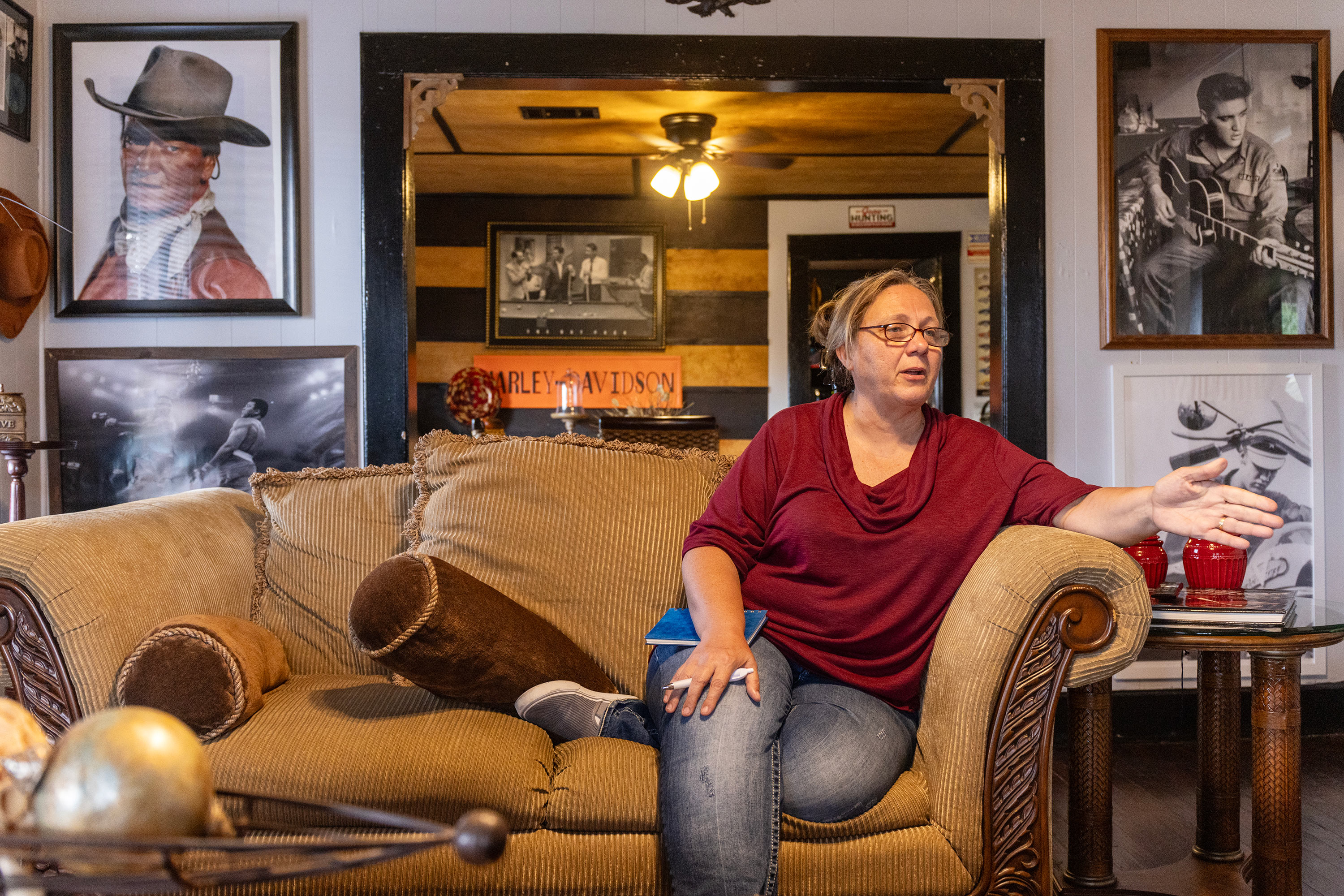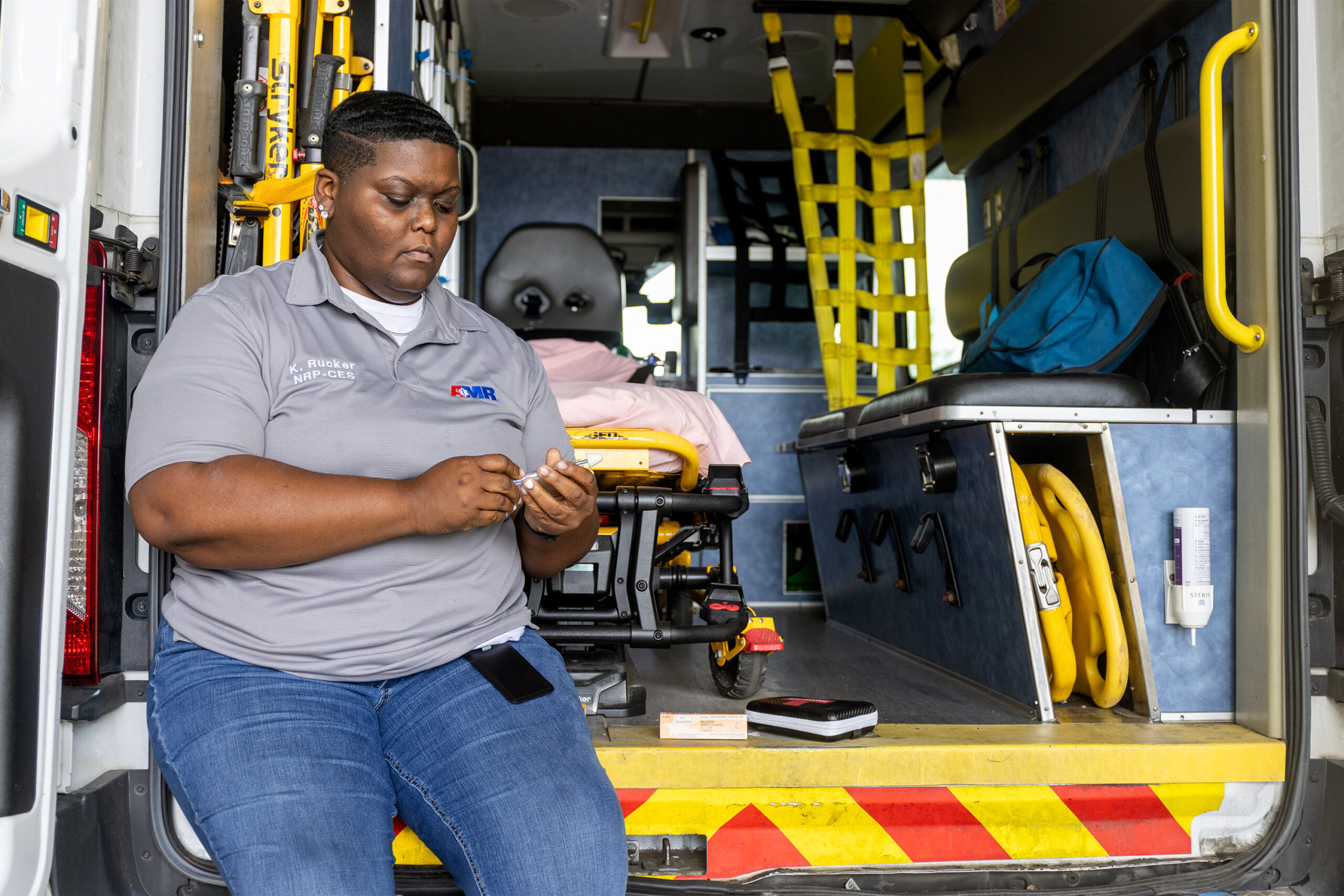Hundreds of Mississippians die every year from opioid overdoses, an epidemic that has claimed the lives of tens of thousands more nationwide. In a series of historic settlement agreements, pharmaceutical companies agreed to pay about $50 billion over 18 years for their role in fueling the crisis — and Mississippi has signed on to be part of the settlements.
How the state and local governments choose to use this cash windfall in the years ahead will significantly shape Mississippi’s policies toward addiction treatment and prevention — as well as health care in general.
We’ve broken down the key things you need to know about the settlements.
Where Is the Money Going?
Mississippi has begun to receive portions of the approximately $203 million it expects from national settlements with three pharmaceutical distributors and one opioid manufacturer. The state also expects an estimated additional $167 million from national opioid settlements with other companies.
The money is split into three buckets: 15% goes to the state government; another 15% to counties and cities, which will be distributed based on population and how heavily the crisis has affected those communities; and the remaining 70% to an opioid abatement fund that will be controlled by the state legislature.
Policymakers and local officials are starting to develop plans for how to use these dollars. The opioid agreements set out guidelines for spending, including nine core opioid abatement strategies — which consist of activities like broadening access to naloxone and medications for opioid use disorder, as well as investing in prevention efforts.
Who Is Controlling the Money in Mississippi?
Both the state government’s share and the abatement fund will be under the direct control of the state legislature, which will ultimately decide how that money gets spent. The legislature, through an appropriations act, has set up a special account for all of the funds it controls.
“We were encouraged by the fact that they set [a fund] up, because that’s the first necessary step,” said Michelle Williams, chief of staff for state Attorney General Lynn Fitch. Advocates across the nation have recommended that states create special funds for the dollars they receive before making any decisions about how to use them.
To date, though, Mississippi’s state and abatement shares have been tapped only to cover attorneys fees from the opioid litigations, according to Williams. Across the country, many jurisdictions have been slow to spend their funds.
The attorney general’s office, which helped negotiate the settlements on behalf of Mississippi, has already signaled some priorities for the money. One is to establish a Center for Addiction Medicine at the University of Mississippi Medical Center — an idea mentioned in an agreement the office reached with cities and counties. The creation and operation of this center would be supported by the abatement fund — the largest pot of settlement dollars. Lawmakers have not widely discussed the proposal, however, and confusion surrounds plan specifics.
According to Williams, the concept arose from conversations with UMMC and members of the legislature. The attorney general’s office provided a document that explains why this new center should receive millions in settlement funds.
That’s where any cohesion in Mississippi’s planning seems to begin and end. UMMC, for instance, declined to confirm any communication with the attorney general’s office about the idea of a new center or answer any questions about the proposal. The system already operates a center that focuses on addiction research and treatment.
According to Leah Smith, deputy chief of staff for Lt. Gov. Delbert Hosemann, his office intends to meet with Mississippi state leaders and advocates “to establish a plan to be adopted by the Legislature when it next meets in January,” although the timeline is uncertain.
The Mississippi Association of Supervisors, whose purpose is to “support and educate county officials and others on topics and issues important to county governments,” reported not having developed a plan to support their members as they prepare to spend the money. By contrast, the Arkansas Municipal League and the Association of Arkansas Counties has created a joint fund that helps local governments there coordinate opioid abatement activities.
Mike Moore — the former Mississippi attorney general who spearheaded the landmark national tobacco master settlement agreement and has been involved in opioid litigation across several states — has concerns about the disjointed approach in Mississippi.
“If you’re just going to send checks out to every little city and county, I don’t know what encourages collaboration there,” he said.
How Has the Money Been Spent So Far?
Every eligible Mississippi county will receive a portion of the approximately $54 million set aside for localities. Choctaw, Montgomery, Sharkey, Webster, and Wilkinson counties were ineligible.
Dozens of cities and towns throughout the state will also be receiving funds, though the amount varies drastically. Gulfport is expected to receive nearly $4.5 million through 2038, the most of any locality in the state. During that same time, Diamondhead will receive about $92.
These payments may increase as the state finalizes settlements with additional companies.
Gulfport is the state’s second-largest city, with a population of roughly 73,000. The coastal city has received at least $430,000 so far. Decisions about how the money is spent will be made by the City Council.
Gulfport councilmember Ella Holmes-Hines would like to see the money go to community organizations that serve people struggling with addiction and law enforcement officer training.
“The problem is how and why you got the money, so therefore you have to address the problem,” she said.
So far the city has used only $4,000, to fund a local Thanksgiving and Christmas meal-delivery program last year.
Few counties reported having concrete plans.
Harrison County Board of Supervisors President Marlin Ladner, for instance, said spending decisions may be made this budget season. Harrison County, where Gulfport is located, led the state in suspected overdose deaths and naloxone administrations in 2022. Similarly, Jackson County — which had the state’s highest number of suspected overdose deaths per 100,000 residents in 2023 — has yet to budget the funds, according to the County Administrator’s office.
At the other end of the state, the DeSoto County Board of Supervisors has committed the $116,000 it has received so far to fund a crisis center.
“It’s for immediate crisis — for if someone has an addiction problem or mental illness, or needs to come for counseling,” said Lee Caldwell, Board of Supervisors president. “DeSoto County likes to be first, but we don’t want to be first in opioid deaths. We don’t want to be first in the challenges that it brings to families because of addiction.”
What Are the Advocates Saying?
As the decision-makers wrestle with their next steps, people who see Mississippi’s opioid crisis firsthand say the need continues to be very real.
“My friends are dying in the streets. We have overdoses every day,” said Jason McCarty, executive director of the Mississippi Harm Reduction Initiative, a community organization that supports people struggling with and recovering from opioid addictions.
Part of the challenge he and other advocates face is keeping the state’s problem in focus.
Provisional data from The Mississippi Opioid and Heroin Data Collaborative indicates that at least 1,257 people died of suspected opioid-related causes from 2020 to 2023 — an average of 314 people a year. That’s lower than the death toll in many other places, he said, but not reflective of what’s happening.
“Mississippi doesn’t look like it actually has a problem compared to other states. But I know that we do,” McCarty said.
Some parts of the state have been hit harder than others. The coastal region stands out, in recent years representing an outsize portion of Mississippi’s suspected overdose deaths, emergency medical services naloxone administrations, and drug-related arrests.
Grassroots organizations, McCarty said, should be first in line to receive settlement resources. The harm reduction initiative distributes naloxone, operates a recovery community center in Jackson, and does educational programming with Mississippi youth.
But in his experience, that’s not how the distribution of resources works.
“I feel like money keeps going to these big organizations who are really not doing grassroots work,” McCarty said.
McCarty and other advocates said it’s difficult to find out what’s going on with settlement funds. He said no one has contacted his organization for input on how the state should spend the money.
Jody Couch founded Inside Out Outreach, which works to provide faith-based support for the homeless population in Gulfport, many of whom have addictions. She believes the money could be best spent addressing the lack of housing and other resources in her area.
“That funding could help with the cost of getting treatment and for it to be local,” she said.

Couch has been contacted for input by at least one local official in Gulfport as the city prepares to decide how to spend its share of the opioid settlement funds.
She believes what the opioid settlement funds need most is oversight to ensure accountability about how the money is spent in her community.
But the state has not implemented public reporting requirements. Localities do not have to say how much money they have received or how it has been spent. There are also no requirements dictating how localities must use the money — they could use it to fill potholes.
Similar concerns about misuse are playing out nationally, but at the same time, there’s hope that the money can do good.
“History will be written. We’ll find out how well they do,” said Moore, the former Mississippi attorney general. “But my gut tells me that they’re going to be pretty serious about the money being spent in the right way.”
KFF Health News senior correspondent Aneri Pattani contributed to this report.
This report was produced through a collaboration between KFF Health News and Mississippi Today.
Mississippi Today, winner of the 2023 Pulitzer Prize for Local Reporting, has exposed corruption, provided critical information in times of crisis, and broken down complicated issues like health care and criminal justice so that everyday people can understand how policy impacts their lives. Founded in 2016 as the state’s flagship nonprofit, nonpartisan newsroom, Mississippi Today’s roots in Capitol coverage have grown to encompass a myriad of beats beyond politics and policy, including education, health, justice, environment, and equity.
